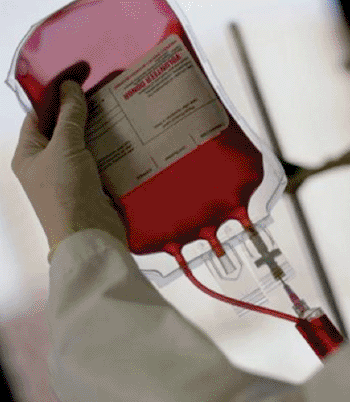Fresher Blood Donations May Be Better for Recipients
By LabMedica International staff writers
Posted on 14 Nov 2013
A modernized blood management system similar to inventory management systems could greatly reduce blood storage time and potentially reduce the risk of complications for the patient.Posted on 14 Nov 2013
Red blood cells (RBCs) undergo biochemical and morphologic changes during storage, and evidence suggests that the longer the RBC product is stored, the less effective is the transfused blood.

Image: Prewashed red blood cells ready for transfusion (Photo courtesy of University of Leicester).
A team of clinical scientists the Cleveland Clinic (Cleveland, OH, USA) reviewed existing literature to examine the presence of storage-related complications in patients who underwent blood transfusions. They found several studies in trauma and cardiac surgery that linked increased blood storage duration to post-injury multiple organ failure, infection, deep vein thrombosis, and hospital mortality, while other studies reported no apparent relationship between storage duration and clinical outcomes.
Several ongoing randomized controlled trials may answer more questions in the future. Meanwhile, the scientists recommend exploring changes to the current first-in, first-out process. They pointed to new models of inventory management in the retail sector that would reduce inventory shelf time in favor of just-in-time delivery of products. One existing model involves blood platelet donation. Platelets expire five days after donation, so managing platelet inventory requires hourly monitoring and more frequent deliveries from blood collection agencies. These same techniques could be used for red blood cell donations and help reduce blood storage duration to 14 days or less.
Colleen G. Koch, MD, MS, MBA, the senior author of the study said, “We recommend further work with inventory management to explore strategies that would optimize fresher blood for patients. Until results of ongoing randomized controlled trials in the area of storage duration are completed, we cannot recommend a change in the current US Food and Drug Administration (FDA, Silver Springs, MD, USA) formal guidelines; however, we encourage surgeons to remain aware of the possible complications associated with red blood cell transfusion.” The study was published on October 31, 2013, in the journal the Annals of Thoracic Surgery.
Related Links:
Cleveland Clinic
US Food and Drug Administration














